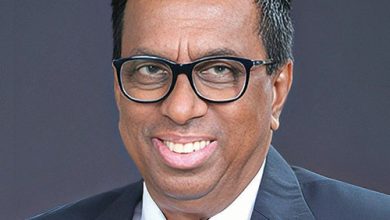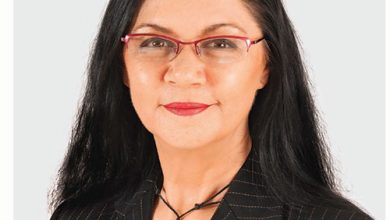EY
Diversity, equity and inclusion (DEI) is a new corporate buzzword but few organisations are embracing DEI in the way that EY Sri Lanka is, by living its corporate vision of ‘Building a Better Working World.’ Here, EY’s seven female Partners discuss how EY empowers them to realise their true potential.
On how EY is helping female employees fulfil their potential
Today, EY has 54 percent female employees and seven female Partners – with its first female Partner – the late Lakmali Nanayakkara, being appointed as far back as 1988.
Looking back, Anoji is thankful to EY for giving other female employees and her an equal chance to succeed based on skills and performance. By not discriminating on the basis of gender, EY has enabled her and many more women for generations to come to thrive in their careers.
“As a firm that offers internships to impressionable youth, EY introduces DEI right from the start. Our young interns are developed into professionals, and this particularly helps female interns to discuss barriers and limitations, and obtain guidance from both male and female bosses. It helps our female staff build the skills and confidence needed to succeed in the corporate world,” she explains.
EY also encourages female employees to complete their education alongside work, become involved in activities related to work, join forums, and enhance skills and knowledge.
When discussing her 25 year journey with EY, Sajeewani says: “Over the years I have never seen any discrimination against females at EY since the focus is on talent, capability and performance. EY’s workplace culture is safe and empowering. The great thing is that with seven female Partners in the firm, we are well-positioned and experienced to mentor younger female employees.”
Gayathri and Roshini point out how many new mothers take a career break, which leads to some never returning to the workforce. “Cognisant of this, EY supports its female employees through life situations and goes the extra mile to ease any personal or professional challenges they may be facing in order to retain them in the firm,” adds Gayathri.
Roshini echoes this sentiment: “For example, in terms of encouraging employees to return after childbirth, EY offers maternity leave and thereafter, the option to work part-time or partly from home.”
She believes that female employee numbers are high at EY because at different stages of their careers the firm has been extremely flexible in providing the necessary support.
Citing her positive personal experience, Roshini says: “I was permitted to work from home and allowed flexible hours of work for almost a month when my father was sick in hospital. This has strengthened my loyalty to the organisation.”
On how well Sri Lankan corporate boards have adopted inclusion and diversity – especially regarding female representation
Roshini cites a report by the International Finance Corporation and the Colombo Stock Exchange, which finds that Sri Lanka will need 500 women directors in boardrooms to reach gender parity. The number of women in boardrooms stood at 221 in 2021 up from 144 in 2018.
In 2018, only 8.2 percent of listed company directors were women, which is lower than neighbouring countries and below the global average of 17 percent.
Whilst calling for greater female representation on boards, Anoji cautions against including a female only for the sake of demonstrating DEI. “The quota system that recommended a percentage of female directors on boards made corporates conscious of including female directors.”
She continues: “Now, we need to create a good pipeline of women directors from which companies can select effective board members. The Board Ready Female Members Directory by CA Sri Lanka and Women Directors’ Forum by the Sri Lanka Institute of Directors are good first steps in that direction.”
Nishamani explains: “Compared to the past, there is a higher representation on boards, with a female being appointed CEO of a diversified group. In the past, most women would opt for the teaching profession but today women are trailblazing their way to the top in every sector.”
Shehani says: “Most companies will want to adopt DEI but it requires cultural evolution. Whilst it is important to advocate that there should be more female representation at board level, the realisation of the same is an evolution in itself. As culture, society and needs evolve, there will be more and more women entering the workforce, and in time to come more female representation in governing positions.
On what are the most pressing challenges facing women professionals today
“Maintaining work-life balance is the most pressing challenge for working women today. There is no doubt that women take on a disproportionate amount of household and childcare work, and when they are also employed, this places additional stress,” says Anoji.
Gayathri believes that balancing personal and work commitments is a challenge that women face every single day due to the lack of properly regulated and monitored childcare services.
Hiranthi notes: “As many women tend to leave their workplaces when starting a family, more flexibility should be provided by employers to assist female employees to better manage their professional and personal goals.”
Nishamani and Hiranthi also speak about gender-based discrimination and harassment at work faced by women. Nishamani expresses her views about women going through different forms of harassment in organisations across the world. Hiranthi elaborates, saying that “it limits opportunities available for women, and this both discourages and demotivates them in workplaces.” And adds: “It is something that can affect women’s health and professional careers.”
They both echo the importance of EY’s inclusive and diversity policies, which clearly prohibit any discrimination against females.
On what more can be done to increase the number of female entrepreneurs and women in the workforce here in Sri Lanka
Anoji and Gayathri believe that the drive to include more women in the workforce should be spearheaded by policy makers “with a task force set up to identify ways and means in which this resource of non-working females can be productive for the economy.”
“There should be more focus to include women in engineering, aviation, finance and IT fields. At job interviews, young female professionals are sometimes asked when they plan to start families! Considering the paternalistic nature of society, it will take some time before equal pay for equal work is offered and gender bias is eliminated,” adds Nishamani.
“Due to the complexity of our legal structures, most women entrepreneurs are in the informal sector. More female entrepreneurs will be encouraged to register their businesses if the legal system is simplified while imparting financial literacy and access to finance to them,” adds Anoji.
In turn, Hiranthi lauds the Women’s Chamber of Industry and Commerce for boosting female SME entrepreneurs.
“The key to introducing more women into the workforce is flexibility,” concludes Sajeewani.
– Compiled by Yamini Sequeira
Telephone – 2463500 | Email – eysl@lk.ey.com | Website – www.ey.com











